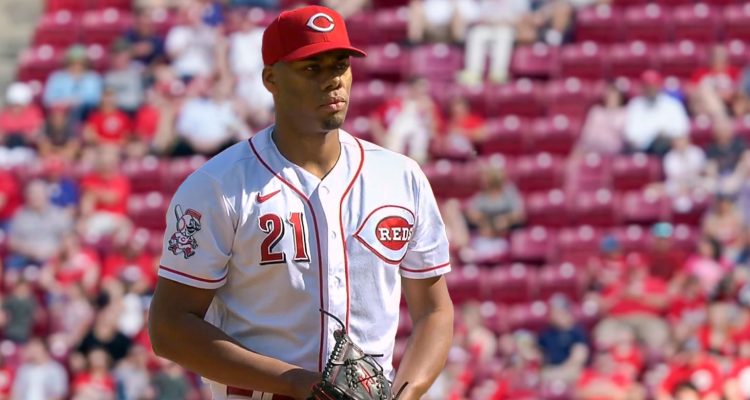
Could 2024 bring a new and different Hunter Greene to the Reds?
Effective pitching is about disrupting the timing of the hitter. You have to keep them on their toes. Changing location, changing looks, changing speeds. When everything you throw is fast, it makes things a little easier on hitters. Not necessarily easy, but perhaps easier. For Hunter Greene, everything he’s thrown in the past falls into the “fast” category. That could be changing in 2024.
In 2023 Hunter Greene averaged 99 MPH with his fastball, 91 MPH with his change up, and 87 MPH with his slider. He didn’t really throw the change up much – just 6.6% of the time – meaning that hitters really didn’t have to think much about it. But there was an interesting little tidbit from his rehab assignment in August. If you missed it, we wrote about it back then, but Greene started throwing a splitter while in Louisville. There weren’t many of them, and in fact he didn’t throw a single one in his final appearance (he made three appearances). When he returned to the big leagues he didn’t throw one, either, covering eight starts through the end of the season.
The splitter is another pitch that falls into the “fast” category. While the sample size for them is incredibly small, last season he averaged 88.4 MPH when he did throw it. Reds pitching coach Derek Johnson noted today to the media (Charlie Goldsmith of the Cincinnati Enquirer was the first to report it) in Goodyear that Greene was working on the pitch for this season. Here’s a look at it from his time in Louisville:
But Johnson also said that Greene was working on a curveball. That pitch is entirely new to Greene as far as we can tell. There’s no data from his time in the minors or majors that suggest he’s thrown one.
While some players throw slow curveballs and other throw them “fast”, it’s very rare for a pitcher to throw a curveball that’s truly “fast”. Only one starting pitcher averaged at least 84 MPH with their curveball in the 2023 season – Kyle Bradish (84.8 MPH). With Greene being one of the hardest throwers in the game, it’s possible he could be there in the mid-80’s with a curveball. It’s also possible that his curveball could be one of those power curves that guys throw in the low-to-mid 80’s. Sometimes that’s where his slider plays at, too.
For Greene, having something a bit slower probably helps him out. But having any third pitch he’s willing and capable of throwing more than five times per game probably helps him out just as much, if not more. To this point in his career he’s essentially been a 2-pitch starter. Yeah, the change up would flash itself every so often – mostly to lefties – but it just isn’t something he would regularly mix in against guys.
If Greene can add both a splitter and a curveball that he can use more than a few times per game, it would not only add the “slow hitters down” with the curveball, but it would also give hitters twice as many offerings to be aware of. Throwing strikes will matter, but Greene’s a guy who has shown good control throughout his career, but when adding new pitches you may need to see how it goes in games before you truly know how that aspect of it will go.
Hope springs eternal, as they say. With Hunter Greene’s upside, there’s a ton of hope that he can become a top of the rotation guy. He’ll probably need at least one of the two pitches he’s working on now to be one he can reasonably rely on to get there. If both become that… well, the Reds and Greene are both likely going to find themselves very pleased.
Leave a Reply